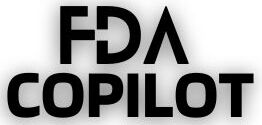Most early-stage MedTech companies prioritize gaining market access, primarily seeking FDA approval to market their medical devices in the US. A common route for this pursuit is the 510(k) regulatory pathway. This pathway permits market entry if the manufacturer can demonstrate that their new device is substantially equivalent to a pre-existing device, known as a predicate device. This often obviates the need for clinical trials, as proving substantial equivalence usually suffices for FDA approval.
However, obtaining FDA approval doesn’t guarantee market adoption, an essential next step for commercial success. For instance, if a new device resembles a predicate device that has been used by orthopedic surgeons for over ten years, convincing these surgeons to switch to the new device can be challenging without clear evidence of superiority. Clinicians familiar with the predicate device understand its functionality and limitations and might be reluctant to adopt a new, albeit similar, device without compelling reasons to change their routine practice.
Market adoption, thus, may necessitate generating clinical evidence to demonstrate the new device’s superiority over existing options. Shaherah Yancy, CEO of Research Lifecycle Solutions, highlighted in the Global Medical Device Podcast the importance of early planning for both regulatory strategy and clinical evidence generation. Delaying the consideration of market adoption can lead to situations where MedTech startups struggle to attract further investment if they have not prepared adequate clinical evidence to support wider use of their product.
Approximately 75% of small medical device companies fail, often due to inadequate preparedness for market adoption after FDA approval. In this regard, when seeking investments, companies should clearly articulate their plan to generate and leverage clinical evidence to achieve market adoption, outlining specific endpoints and benefits expected from clinical studies.
Clinical evidence should not only aim to confirm the safety and effectiveness of the device—criteria necessary for FDA approval—but also to demonstrate additional advantages that could facilitate broad adoption. One key focus should be on endpoints illustrating benefits not just to patients, but also to hospitals and clinicians. For instance, if a device can streamline operational workflows in the operating room (OR), enhance cost-effectiveness, reduce recovery times, decrease infection rates, or improve quality of life as reported by patients over time, it becomes more attractive to all stakeholders involved, including insurers.
To efficiently manage and execute clinical trials, MedTech companies can utilize specialized tools like electronic data capture (EDC) systems which are tailored for the medical device industry. For example, Greenlight Guru Clinical’s MedTech-specific EDC software offers an intuitive interface and simple study build process, optimized for medical device trials rather than pharmaceutical-focused features. Such tools are designed to ensure compliance with relevant FDA and EU regulations, as well as ISO standards like ISO 14155:2020, thus easing the burden of adhering to regulatory requirements while collecting and managing essential clinical data.
In conclusion, while the initial focus for many MedTech startups might be on gaining FDA market access via pathways like the 510(k), it’s crucial to recognize early that market adoption relies heavily on demonstrating tangible benefits through robust and strategically planned clinical evidence. Such evidence should convincingly prove that the new device brings superior benefits, creating compelling reasons for clinicians and healthcare systems to adopt over well-established predicate devices. Additionally, utilizing industry-specific tools to manage clinical evidence can significantly streamline the process, better positioning products for market success.
#Class #Device #Clinical #Evidence



